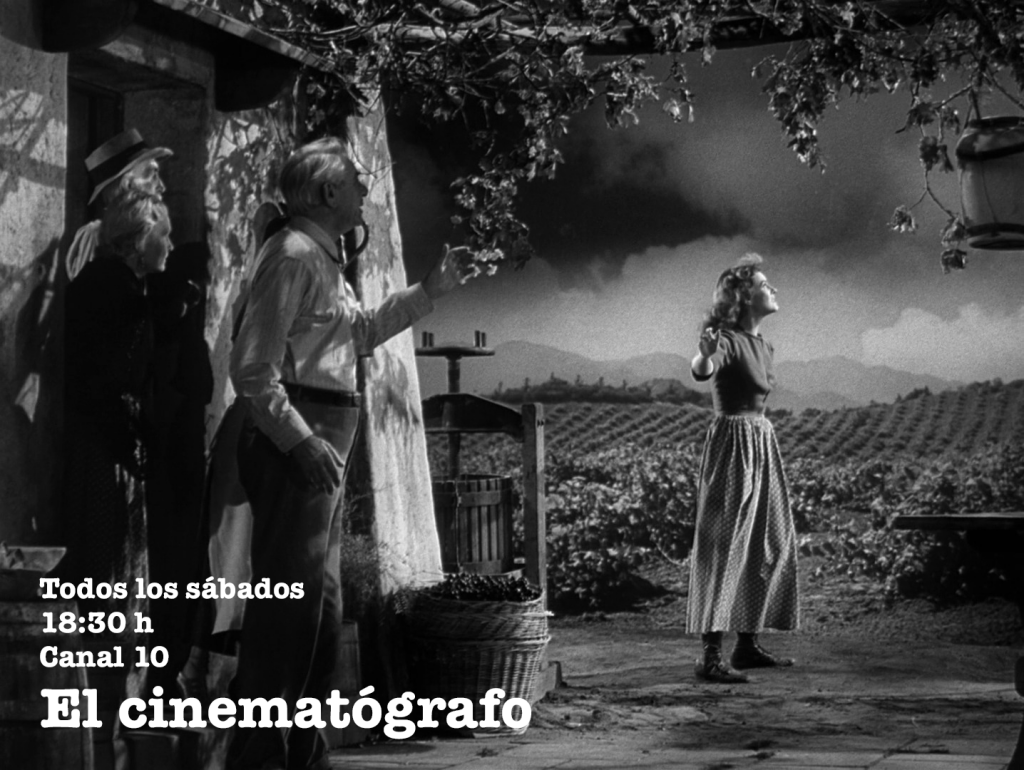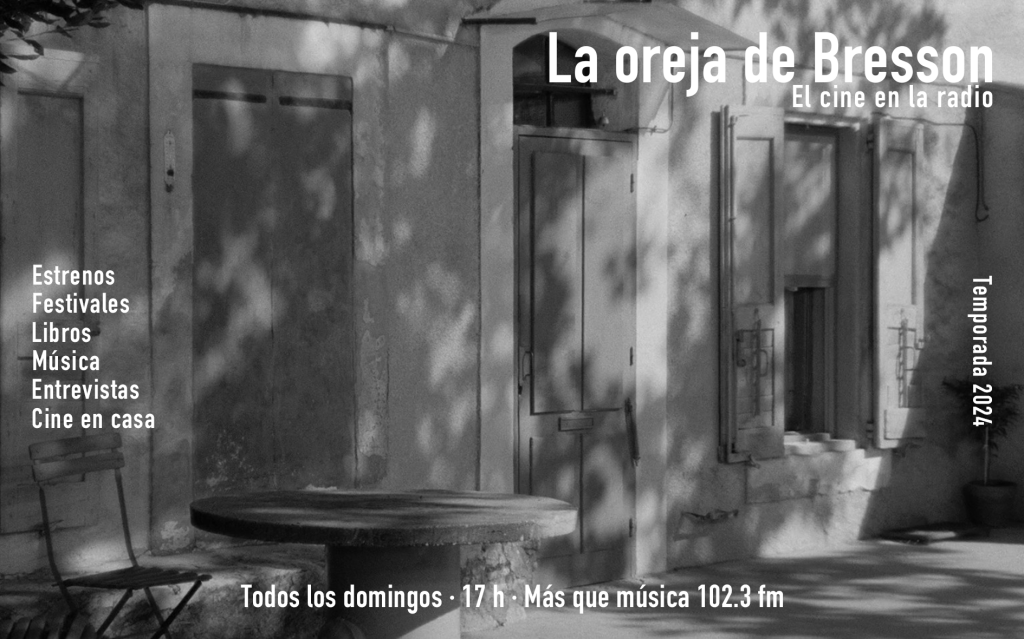
EL CINEMATÓGRAFO 2015 (02): UN ENCUENTRO CON DAVID WALSH
Aquí se puede ver la primera parte de nuestra charla sostenida en el marco de FICUNAM 2015 durante el mes de marzo 2015. Hablamos de las relaciones del cine con la Historia y la situación actual del cine contemporáneo, entre otras cosas.
Aquí se puede ver la segunda parte de la conversación.
Roger Koza / Copyleft 2015








David Walsh:
A number of trends in contemporary “art filmmaking,” some of them retrograde and wrongheaded, in my view, expressed themselves at the FICUNAM. Various films, such as Pedro Costa’s Horse Money, Hermes Paralluelo’s Not All is Vigil, Lisandro Alonso’s Jauja, Jean-Marie Straub’s latest offerings, Communists and The Algerian War, and, to a certain extent, Aleksey German, Jr.’s Under Electric Clouds and Adirley Queiros’s White Out, Black In, all suffer from a bleakness, paralysis and gloom that speak more to certain moods in the intelligentsia than they do to broader currents in contemporary life.
Cavalo Dinheiro…
But much of Horse Money, including the repeated shots of Ventura walking down a corridor and his tour of the empty factory, is tedious and almost unendurable. Costa’s grim, joyless filmmaking is useful at communicating one or two emotions. This is not a film taken from life. The director is too obviously striving to impress.
As I suggested in 2006, “At its best, this is filmmaking of the utmost social passivity, which accepts the oppressed almost entirely as it finds them, aestheticizes their condition and, perhaps without meaning to, makes a virtue out of what is, in fact, transitory and ephemeral social ‘necessity.’”
Even if that were the case, and it is a dreadful misreading of the present circumstances, that would be no excuse for “resigned” and “mediocre” art, such as Costa produces. In fact, the contemporary glum school of filmmakers tends to adopt the shallowest and most reductionist—and non-innovative, non-dialectical—aesthetic approach: life is bleak and miserable, therefore art should follow suit! The task of the artist, on the contrary, having thoroughly immersed him or herself in life, is to stand back somewhat and convey the truth of the situation, not simply its surface appearance, to others.
No Todo es Vigilia…
The filmmaker may sincerely want to investigate old age, illness and death, but I found the film rather dull and, at the same time, exploitative. It largely abstracts the social element, the conditions imposed on elderly people by the profit system, in favor of obvious or intrusive contrivances.
As I commented at the March 3 forum at the FICUNAM festival, in response to many of these films: “When I see films which I find are simply bleak or dreary, or paralyzed, and, if you will pardon the expression, constipated, where there’s no movement, no life, I’m not convinced that that’s formally innovative. …
“That’s what I’m concerned about: more life, more vivacity, more emotion, more drama in the so-called independent cinema. I think that is bound up with a greater appreciation of the historical issues, the contemporary situation, and I think it’s bound up with a new social atmosphere. We can argue and we can make appeals, we polemicize on the web site, but we also understand that there has to be a big social movement which breaks up this situation, breaks up the situation so the skepticism and pessimism that exists among the intellectuals will also be changed.”
Contexto…
First things first. Mexico City is an immense urban sprawl, a sea of humanity. While the city’s official population is 8.8 million, the metropolitan area is estimated to be home to 22.2 million people, making it one of the largest “agglomerations”—and the largest Spanish-speaking city—in the world.
As a country, Mexico is ranked eleventh in the world in terms of population, with 120 million people, almost half of them under the age of 25. UNAM, founded in 1910, is the largest university in Latin America, with some 325,000 students.
The massive and restive Mexican working class confronts a corrupt, criminal ruling elite, whose major political parties and leading institutions are all increasingly discredited. The cold-blooded murder of 43 students in the southern Mexican state of Guerrero in September, a crime and subsequent cover-up in which every party played a role, exposed for all the world to see the brutal character of the country’s social relations. American imperialism stands firmly behind the government of President Enrique Peña Nieto in its efforts to implement “reforms” at the expense of wide layers of the population.
The horrific atrocity in Guerrero remains on nearly every mind. At the film festival’s opening ceremony February 25, I was told, the festival director made reference to the killings and the audience of 800 began to count, “1, 2, 3 …” up to 43. It was understandably a very emotional moment.
A group of more than 40 individuals working for the festival handed a statement to each invited guest, bringing attention to the killings. The statement described the Guerrero event as one of “the crimes against humanity that are occurring in our country,” and argued furthermore that the massacre “is not an isolated incident, that Mexico has a long history of injustices committed by the government against the people.” It accused the Peña Nieto administration of being responsible for thousands of “forced disappearances” in its first two years and two months in office.
http://www.wsws.org/en/articles/2015/03/18/mexi-m18.html
http://www.wsws.org/en/articles/2015/03/25/fic3-m25.html
Lo he leído, lógicamente, y mi desacuerdo es general, más allá de mi aprecio por su lectura. RK
No se entiende la objeción del «comentario», que asume que dejar la cita textual alcanza. Una vez màs, parece que no se puede hablar contra lo que el extendido sentido comùn (a)crítico contemporáneo sostiene como el canon y el deber ser del cine en el posmodernismo. Walsh saca los pies del plato, a Dios gracias. Pero cómo molesta la excepción a la regla…
En lo personal no me molesta, aprecio su gesto y sus ideas, aunque no comparto sus ejemplos, y no por eso deja de interesarme lo que dice y en especial su concepto de realismo pasivo, por ejemplo. Me llamó la atención de que algunos colegas extranjeros me pedían en Cannes que le responda por sus textos en contra de estos filmes que se dieron en FICUNAM. David sabe muy bien que son mis elecciones personales debido a que fui yo el que escribió para el catálogo sobre No todo es vigilia, Cavalo Dinheiro y Kommunisten. Personalmente, no me enojo; solamente me lleva a pensar a fondo los vínculos entre lo formal y lo conceptual. Hemos hablado públicamente sobre el criterio de análisis suyo y el mío, y hubo grandes momentos de discusión. Nada más que eso. Yo tampoco entiendo qué quiso hacer J. Magonista con esta intervención. Pero sirve para aclarar estas cosas. RK
Es muy bueno el concepto de «realismo pasivo». Habría que agregarle el de «crítica pasiva». Por no hablar de cosas peores, como esos críticos que menciona Roger que ni siquiera se molestan en responder y esperan que otros lo hagan por ellos. O que simplemente el sistema expulse a los tipos (y cuestionamientos) que representa Walsh. Eso da una idea clara de que detrás de esa nada inocente «pasividad» está la complicidad con el sistema.
Qué lejos quedó el boicot al festival de Cannes en el 68, cuando Truffaut y Godard estaban en la misma tribuna…
Lo que dice Walsh en el último párrafo…
“That’s what I’m concerned about: more life, more vivacity, more emotion, more drama in the so-called independent cinema. I think that is bound up with a greater appreciation of the historical issues, the contemporary situation, and I think it’s bound up with a new social atmosphere. We can argue and we can make appeals, we polemicize on the web site, but we also understand that there has to be a big social movement which breaks up this situation, breaks up the situation so the skepticism and pessimism that exists among the intellectuals will also be changed.”
… me recuerda un poco a lo que decía Kluge sobre el realismo (cómo debe discutir lo dado antes que reproducirlo). Es cierto que encontrar un balance es difícil y que a veces no sé si no es mejor el cinismo, el escepticismo, el pesimismo (y hay distintas formas de ser pesimista, no es lo mismo Schopenhauer que Von Hartmann, y no son las únicas opciones) a caer en más vida y vivacidad o en un optimismo ciego (el peor Haneke quizás sea preferible a cualquier alienado feliz). No deja de ser lógico que el cine que se haga en un país donde todos los días desaparece gente, hay torturados, largo etc. peque de pesimista, aunque es cierto también que la mera reproducción de lo dado no sirve de mucho (y que puede conducir a la parálisis o, aún peor, a cierto regodeo en la propia desgracia y a un sentido de la inviolabilidad del destino al fracaso).
Buenas… Llego tarde al debate, pero he de decir que -más allá de que no queda de ningún modo clara la intención de Magonista al citar fragmentos de los textos de Walsh (y efectivamente eso no constituye por sí mismo de ninguna manera algo así como una crítica)-, leí con bastante expectativa sus crónicas sobre Ficunam por las referencias de NP en su libro y de Roger en el blog -además, tengo bastante simpatía por la cuarta internacional-, y la verdad me decepcionaron fuertemente sus análisis de la mayoría de las películas arriba mencionadas… Además, su apurada adjetivación descalificatoria al pasar de la escuela de Frankfurt como anti-marxistas, Foucault como un subjetivista posmoderno relativista, y Rancière como horrible ex-izquierdista posmoderno, etc., me parecieron dignas de un marxismo un tanto cabeza, digamos… Creo que tanto Cavalo dinheiro, como Branco sai, preto fica y No todo es vigilia son películas muy valiosas políticamente. Su caracterización de Costa como si naturalizara la opresión del mundo social que retrata y la mostrase como una virtud que invita a la resignación me parece sumamente desacertada. Sí creo que hay algo así como una estetización de ese mundo, pero en eso coincido con Roger en que la lectura de Rancière de Costa es más interesante: la cuestión es cómo empoderar cinematográficamente a los desclasados, proponer un reparto de lo sensible en el que ellos sean protagonistas, y que no tenga nada que envidiarle formalmente al cine de «alta cultura». La de Queirós también me parece que va en la mismas línea, aunque su propia imaginación la lleva a despegar hacia latitudes de ciencia ficción delirantes como modo de revancha simbólica, y lo mismo se podría decir de Yatasto, la notable peli anterior de Paralluelo (No todo es vigilia a su manera también tiene un gesto político en el mero hecho de llevar a personas de «tercera edad» a la pantalla tal como lo hace, respetando su temporalidad, y al contrario de lo que leí en varios lados, no creo para nada que haya crueldad con sus abuelos, mostrarlos así es amarlos enormemente, y es un acto de sinceridad absolutamente saludable). No vi aún las más recientes de Straub, aunque Walsh lo descalificaba en términos generales y no me pareció que argumentara demasiado, más bien describía los planos estáticos y largos e inmediatamente decía algo así como «aburrido, no?». Y eso ya me parece terriblemente cuadrado…
Igualmente me cayó bastante simpática la conversación en El cinematógrafo… Seguiré visitando wsws.org
Migo: lo que usted escribe es más o menos lo que pienso sobre algunos de los textos que Walsh escribió sobre FICUNAM. Respeto, no obstante, su mirada, y en especial cuando lee históricamente todo lo que ve. En persona es un encanto, un buen tipo. Pero eso es independiente de sus textos. Y concuerdo con lo que dice de los films en cuestión. Saludos. RK